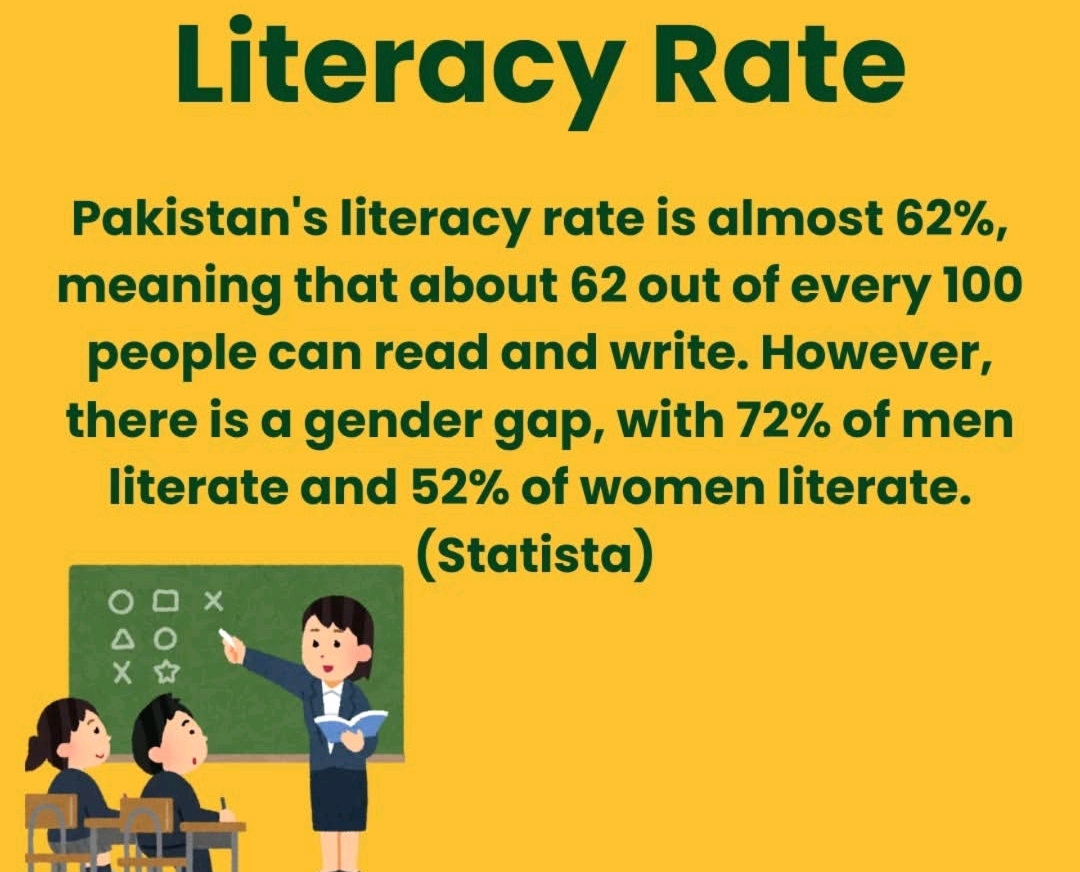Introduction
Education is meant to change the fate of society. But if the system of education is not appropriate the society is no longer left with a mess of unhealthy crowds accordingly. The education system in Pakistan faces numerous challenges that hinder its effectiveness and accessibility. Here are some of the key flaws:
- 1. Low Literacy Rate
- 2. Inequality in Access to Education
- 3. Underfunding
- 4. Outdated Curriculum
- 5. Teacher Quality and Training
- 6.Gender Disparity
- 7. Regional Disparities
- 8. Lack of Technical and Vocational Training
- 9. Political Instability and Policy Implementation
- 10. Security Issues
- 11. High Dropout Rates
- 12. Lack of Focus on Early Childhood Education
- 13. Overcrowded Classrooms
- 14. Corruption and Mismanagement
- 15. Language Barriers
- 16. Lack of Accountability
- 17. Inadequate Focus on Special Education
- 18. Examination-Oriented System
- 19. Brain Drain
1. Low Literacy Rate
- Pakistan has one of the lowest literacy rates in the region, with significant disparities between urban and rural areas, as well as between genders.
- Many children, especially girls, are out of school due to cultural, economic, and social barriers.

2. Inequality in Access to Education
- There is a stark divide between the quality of education available to the rich and the poor.
- Elite private schools offer high-quality education, while government schools often lack basic facilities, qualified teachers, and resources.
3. Underfunding
- Pakistan spends a very small percentage of its GDP on education, far below the recommended international standards.Instead of investing money in education Pakistani authorities continuously waste money on some petty things.
- This results in inadequate infrastructure, outdated curricula, and insufficient teacher training.
4. Outdated Curriculum
- The modern education system requires a basic and modern curriculum but in Pakistan curriculum in many schools is outdated and does not align with modern educational needs or job market demands.
- There is an overemphasis on rote learning rather than critical thinking, creativity, and problem-solving skills.
5. Teacher Quality and Training
- Many teachers in public schools are underqualified and lack proper training.
- Low salaries and poor working conditions demotivate teachers, leading to low performance and high absenteeism.

6.Gender Disparity
- Cultural norms and economic constraints often prevent girls from attending school, particularly in rural areas.
- The gender gap in education remains a significant issue, with fewer opportunities for female students.
7. Regional Disparities
- Education quality and access vary significantly across provinces and regions.
- Balochistan and Khyber Pakhtunkhwa, for example, face greater challenges compared to Punjab and Sindh.
8. Lack of Technical and Vocational Training
- The education system does not adequately prepare students for the job market, as there is a lack of emphasis on technical and vocational training.
- This results in a mismatch between the skills graduates possess and the needs of employers.
9. Political Instability and Policy Implementation
- Frequent changes in government and education policies lead to inconsistency and lack of long-term planning.
- Even when policies are formulated, their implementation is often weak due to corruption and bureaucratic inefficiencies.
10. Security Issues
- In some regions, particularly in conflict-affected areas, schools face security threats, including attacks on educational institutions.
- This disrupts education and discourages parents from sending their children to school.
11. High Dropout Rates
- A significant number of students drop out before completing primary or secondary education due to poverty, child labor, or lack of interest in the curriculum
12. Lack of Focus on Early Childhood Education
- Every child must be trained to conceive the quality education instead of educating kids at home parents focus on early schooling of children.Early childhood education is often neglected, which is critical for cognitive and social development.
- This lack of foundational learning affects students’ performance in later years.
13. Overcrowded Classrooms
- Many public schools have overcrowded classrooms, making it difficult for teachers to provide individual attention to students.
14. Corruption and Mismanagement
- Corruption in the education sector, including the misallocation of funds and ghost schools (schools that exist only on paper), further exacerbates the problems.
15. Language Barriers
- The medium of instruction in many schools is either Urdu or English, which may not be the first language of students, particularly in rural areas. This creates a barrier to effective learning.
16. Lack of Accountability
- There is often no effective mechanism to hold schools, teachers, and administrators accountable for poor performance or mismanagement.
17. Inadequate Focus on Special Education
- Children with disabilities or special needs are often neglected, with limited access to inclusive education or specialized schools.
18. Examination-Oriented System
- The education system is heavily focused on examinations, which encourages rote memorization rather than understanding and application of knowledge.
19. Brain Drain
- Many talented educators and students leave the country for better opportunities abroad, leading.

What are the main problems in Pakistan’s education system?
Outdated curriculum, poor quality of teachers, lack of infrastructure, and inequality in access to education.
. Conclusion:
In conclusion, Pakistan’s education system faces several significant challenges, including an outdated curriculum, inadequate teacher training, poor infrastructure, and unequal access to education. These issues are compounded by political interference and a focus on rote memorization rather than practical learning. To create a more effective and equitable education system, it is essential to address these flaws through comprehensive reforms, better resource allocation, and a commitment to providing quality education for all, regardless of gender or location. By doing so, Pakistan can empower future generations to thrive in a rapidly changing world.

